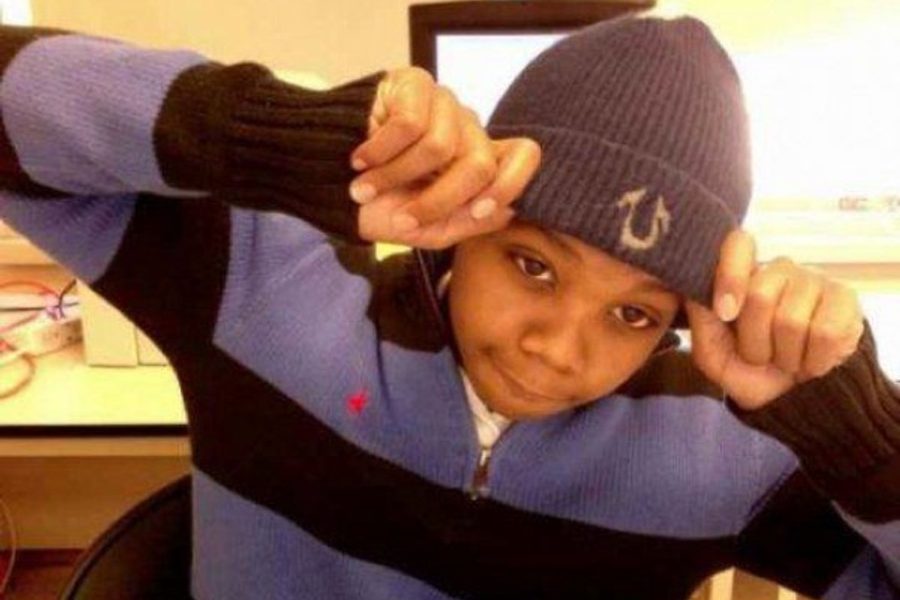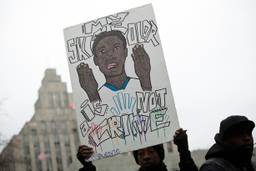
16-year-old Kimani Gray was killed by police on Saturday, March 9 in East Flatbush, Brooklyn. Every evening since, crowds of East Flatbush mourners and their supporters have gathered to take a stand against a police force widely seen as a racist paramilitary organization operating in their neighborhood with impunity.
Scores of police squads have descended upon the growing vigils on Church Avenue. Last night, hundreds of protesters faced off with police, contesting efforts to net and mass-arrest them throughout the evening. Council member Charles Barron told Democracy Now: “This is the least that the community could do is to respond and resist.”
Late in the night, police arrested Kimani Gray’s sister and an estimated 46 others — mainly local young people, and some outside supporters — who remain detained at several precincts. Since 1.30am, witnesses on Twitter have reported that the whole of East Flatbush is becoming a so-called Frozen Zone: an unofficial NYPD tactic of totally excluding the media from an area.
The two police officers who fired 11 rounds at Kimani say that he pointed a .38 at them after being told to freeze for adjusting his waistband “in a suspicious manner.” But “birds’-eye-witness” Tishana King’s testimony directly contradicts the police version of events: King saw that “Kiki” had nothing in his hands.
Kimani’s killing was the latest in an unrelenting stream of similar incidents across New York City and the United States. There have been 79 killings by law enforcement officers in the U.S. in 2013 alone. Present at last night’s demonstrations were Bronx community activists Constance Malcolm and Franclot Graham, the parents of Ramarley Graham, whom the police slayed in his grandmother’s bathroom at close range slightly over a year ago.
Heartbreakingly, Kimani was the second brother lost by Mahnefah Gray (and the second son lost by her mother, Carol): Jamar died in a car accident two years ago. Kimani reportedly suffered taunts from local police officers over this bereavement, as well as personal threats. Friends and relatives now bear prints of Kimani’s face on their shirts and sweaters.
Of course, everyone in Flatbush will tell you: Many have died. According to the Stolen Lives Project, the NYPD kills around two Black or Brown people a month, often in stop-and-frisks like the one that claimed Kamani. Ten hours before Kimani’s death, the NYPD shot Clinton James at a traffic stop in Staten Island; he is in stable condition. Disgracefully, this year a federal District Judge lifted the momentary ban on stop-and-frisk in the Bronx that had been achieved through concerted struggle by groups like Ramarley’s Call and the Stop Mass Incarceration Network in defense of young black men.
Activists are up against not just the police, but also the very logic that normalizes police violence and permits the public to rationalize Black deaths. Kimani has been smeared as a ‘Blood’ and a gangster, as though this (unsubstantiated) fact would make okay his unprovoked death at the hands of the state. In the UK, where gangs hardly exist, the police murder of 29-year-old Mark Duggan sparked nationwide riots, and Prime Minister David Cameron likewise dragged up the unrelated issue of “gang culture” as a smear tactic. Those out last night refuse to see lives devalorized in this way.
A spokesperson for the NYPD declared that the gun “found on the scene,” which no one except police has seen, contained four live rounds. So we are supposed to believe that Kimani, who was attending a baby shower, had a gun on him. He was by all accounts a young man with common sense, well acquainted with the dehumanizing ubiquity of stop-and-frisk. Yet we must believe that he whipped around like Rambo to aim at some plainclothes cops when they suddenly confronted him. New York Police Commissioner Ray Kelly is asking us to believe there was reason to shoot, even though Kimani fired no shots and pled for his life. Either the plainclothes sergeant or the officer is said to have cried out “Oh god!” much, much too late.
As Lichi D’Amelio of Ramarley’s Call commented to In These Times, the NYPD’s contradictory narrations of police killings in the last year of, amongst others, Mohamah Bah, Shantel Davis, Reynaldo Cuevas and Noel Polanco, have lent credence to the claim that it is in fact systemic police practice to lie and even to plant guns at the scene of the crime.
D’Amelio sums up the struggle against police brutality in New York:
We are not yet at the point where those in power feel that they would be taking enormous political risks by allowing police to continue to kill with impunity. It is up to us, now, to build a movement that can use campaigns such as the fight for CSA and the conviction of Richard Haste to tip the balance of forces in our favor, without losing sight of the goals of ending SQF [Stop, Question and Frisk] and police violence once and for all.”
As the voices from the street chanted: Let Kimani be the last.


